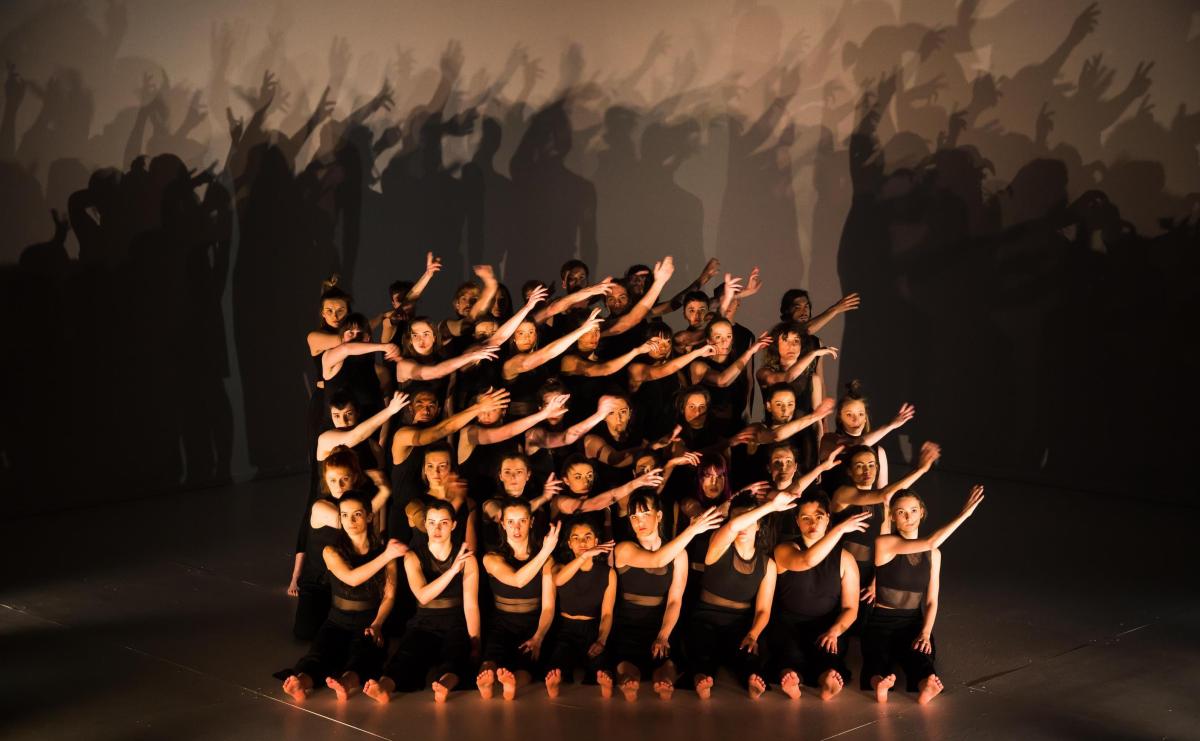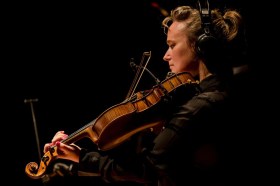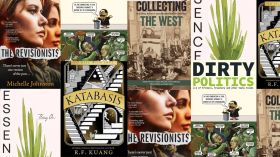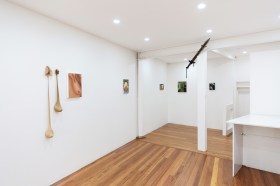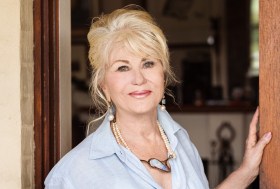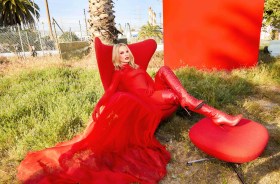Often, the most powerful forces in our lives can be the hardest to quantify. The subtle, fluctuating levels of our own wellbeing, confidence and connections are core to our happiness, our sense of security, our decision-making and much of our economic activity.
For over a decade, the Australia Council for the Arts has taken on the challenge of tracking some of these dynamics, and how they relate to our engagement with arts and culture. Released last week, Creating Our Future: Results of the National Arts Participation Survey is the latest of four studies on views and behaviours around arts and culture. The nationally representative sample is enormous by research standards — almost 9,000 Australians
Overwhelmingly — 84% — of these everyday Australians told us that arts and culture had a positive impact on their lives. More than half said the arts had a ‘big’ or ‘very big’ impact on their happiness, wellbeing and mental health.
Across a range of measures, Australians said they rely on arts and culture to live whole and connected lives. The longitudinal survey data reveals substantial growth in how many, and how much, Australians value the arts — even before we became so reliant on them in lockdown. (The survey fieldwork was conducted immediately prior to the COVID pandemic outbreak).
Read: 98% National arts participation is a great stat to leverage recovery support
This latest survey revealed that, in pre-pandemic times, participation in arts and culture had multiple ‘halo’ effects, including drawing customers to local businesses. Arts and culture was a major driver of tourism — including domestic tourism which is now a key part of post bushfires and COVID-19 recovery plans. Research that we published in February revealed arts day trips and overnight trips involving the arts — travelling to see a show or visit a regional gallery, for example — contributed $16 billion to 2018 domestic tourism income.
“It will be the innately human capacity for creativity that will become our most valued, and employable, trait”.
Australians also recognise how crucial arts and creativity will be to our future: just under three quarters of the survey respondents saw arts as a vital part of the education of our children. More than half believed arts would build the creative skills that will be necessary for the future workforce.
As machine learning and artificial intelligence automate vast swathes of our traditional industries, it will be the innately human capacity for creativity that will become our most valued, and employable, trait.
It is passing strange then, to have to continually argue for the place of arts and culture in serious policy conversations, including around health and wellbeing, education and indeed the broader economy.
Despite oceans of evidence to the contrary, some still see arts and culture as a luxury, or an indulgence for better times, rather than as key to building a more resilient and well-resourced society and economy.
This may be because many have tended to think of arts funding only as ‘support for artists’, rather than as a vital investment in the wellbeing and prosperity of our whole community.
There has been a tendency to focus almost entirely on the initial recipients of arts funding — artists, arts companies — rather than its beneficiaries: engaged audiences, more cohesive communities, inspired kids and a healthier, happier population.
Just as a thought exercise, imagine if we only focused on the benefits to funded practitioners in areas like medical research, or education, or even in industries through measures such as the fuel excise. If we thought of all that money going simply to lab researchers, or say, administrators in education departments, or individual companies, we’d likely be having very different conversations about their value as well.
We need to stop focusing solely on the production side of the equation in arts and culture, as critical as that is, and reflect on what participation and engagement with our arts and culture do for us.
Of course, for arts and culture to do what they do for us, they have to resonate — and this doesn’t simply happen. It takes years of training, access to the right tools, multiple attempts, collaborations, inspiration and perseverance with a discipline. It requires time, training and support. As in any field of endeavour, brilliance rarely emerges from a vacuum. And risk and experimentation is often from where the new thinking comes.
Observing the ecosystem of Australian arts and culture through the lens of engagement is equalising. It largely does away with the tiresome tribalism of the culture wars; our research tells us that 98% of Australians regularly participate in arts and culture.
We’re all in this. We’re not talking about elites and skewed priorities here. We’re talking about vital elements of the wellbeing of the entire community.
Vital because arts and culture don’t just entertain us, they provide connection and meaning.
As in any field of endeavour, brilliance rarely emerges from a vacuum. And risk and experimentation is often from where the new thinking comes.
In today’s attention economy, original and authentic creative work offers the holy grail that marketers, brands and government messaging all strive for: deep engagement with ideas.
It is the power of this engagement that draws us out (when restrictions permit) to theatres, galleries, bookshops and venues — giving life to local communities, cafes and restaurants, cities and regions — a drawcard to bring us to other parts of the country — and a boon for tourism, hospitality and local businesses.
We all know the capacity of transformative experiences to give us new insights, change our thinking and deepen our understanding.
We know it because we all experience it. We understand the affective power of music to make us feel deeply; of storytelling to communicate ideas; of live performance to have us on the edge of our seats, connected to the audience around us, the performers on stage, and the cultural moment.
Creative work helps us interpret the world and the moment we’re in — and it is now offering a more expansive view of who we are and where we find ourselves. Three quarters of Australians now recognise the importance of First Nations arts, and increasing numbers use the arts to connect with other cultures, or to celebrate and showcase their own. More than one in three Australians connect with, and share, their cultural background through arts and creativity including more than half of culturally and linguistically diverse Australians.
That could be a dance performance at a local Vietnamese festival or S. Shakthidaran’s Counting and Cracking tracing echoes of Sri Lankan civil conflict in a family living in Coogee for rapturous, sold out theatre crowds.
We use the arts to understand one another. To connect.
This is not to say that barriers don’t exist. We know that systemic problems have limited engagement with the arts for some groups in our community. These problems have included issues of representation, cost, location and perceived or actual accessibility. We also know from this research one of the biggest priorities for public funding is to enable low-cost or free events.
Legacy notions still persist, however, in how some think about arts audiences and different forms of creative practice. A perceived high/low distinction between some traditional European forms like ballet or opera and popular music or cultural expression from other cultures — often eternally relegated to the ‘emerging’ sector, no matter the levels of world class performance or creation they attain — is unhelpful and out-of-date. We’ve moved on. Our definition of arts and culture is expansive and includes everything from the books we read and the music in our headphones, to TikTok and Netflix.

First On The Ladder, Polyglot Theatre. Photo: Simone Ruggiero.
The challenge now is to ensure that the faces, bodies, accents, perspectives and ancestral inheritances populating our cultural lives reflect modern Australia. Like never before, arts organisations are now being held accountable to audiences and new measures of inclusion through instruments such as diversity strategies, reconciliation action plans and the requirements of funders. There is still a way to go. Our arts institutions, creators and audiences need to become as diverse and open to the free movement of different views and ideas as our community. Relevance is crucial.
The latest survey has shown a gratifying consolidation of the community’s view of the role of arts and culture in supporting social cohesion. 71% said arts and culture help us understand perspectives different from our own, 60% say they impact on our understanding of other people and cultures, 53% say they help us connect with others. Creative expression helps us reach for a more expansive view of who we are as a community and what we could become.
Through our participation in arts and culture we become — collectively — bigger, more open, less fearful. We also become more mentally healthy, more connected to one another and more willing to spend in our local and regional businesses.
We also know how important arts and creativity will be to coming generations: when it comes to public and private investment in the arts, the priority with the highest level of support among Australians is access to arts and creativity in the lives of children and young people to support their learning and development — 74% ranked this in their top three investment priorities.
Unsurprisingly, we all want our children to live their fullest possible lives, and to reach their greatest potential. We should wish this for all Australians — as should our policy makers.
There could be no more important reasons to bring arts and culture to the fore when considering the levers we hold to shape our future.
This piece was originally published by The Australia Council for the Arts.

